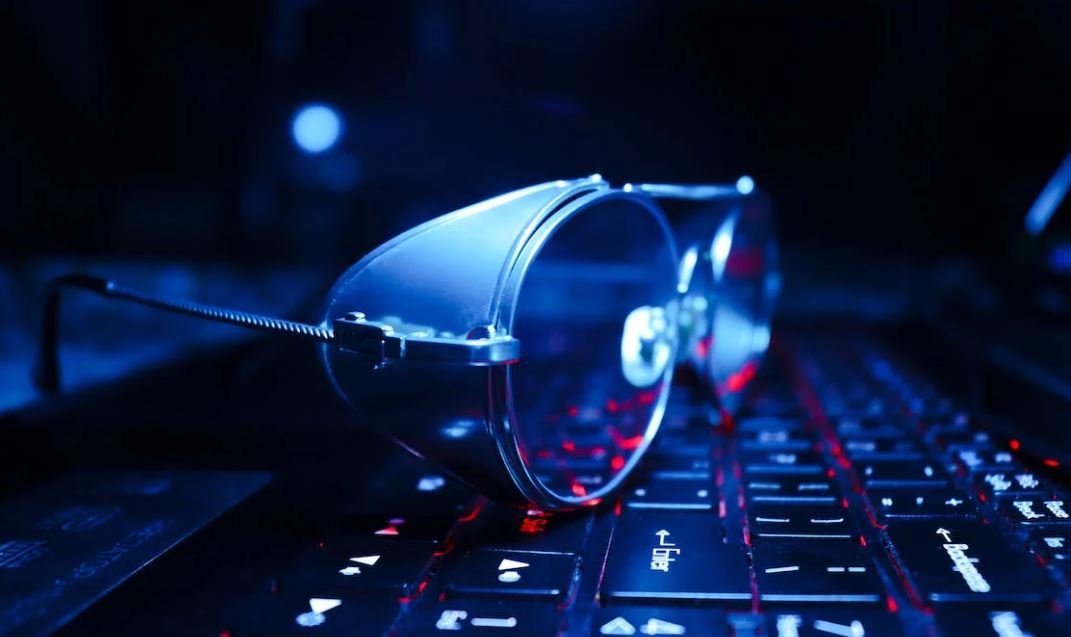Are AI Image Generators Safe?
Artificial Intelligence (AI) has made significant advancements in recent years, particularly in the field of image generation. AI image generators, also known as deepfake generators, use machine learning algorithms to create highly realistic images and videos of people who may not exist. While these technologies offer exciting creative possibilities, there are concerns regarding their potential misuse and impact on privacy and security.
Key Takeaways:
- AI image generators have the potential to create highly realistic images and videos of people who do not exist.
- Privacy and security concerns arise due to the potential for AI-generated fake images and videos to be used for malicious purposes.
- Regulation and responsible use of AI image generators are necessary to mitigate the risks associated with this technology.
One of the main concerns surrounding AI image generators is their potential for misuse. These tools can be employed to create fake images and videos that are virtually indistinguishable from real ones, leading to the spread of misinformation and the potential for malicious activities.
Research has shown that AI-generated images are becoming increasingly difficult to discern from authentic visuals.
The Risks of AI Image Generators
There are several risks associated with AI image generators:
- Disinformation: AI-generated fake images and videos can be used to spread false information, manipulate public opinion, and influence elections.
- Privacy Invasion: These tools can be utilized to generate images of individuals without their consent, raising significant privacy concerns.
- Identity Theft: AI image generators can be misused to create fake identities, leading to potential cases of identity theft and fraud.
- Deepfake Pornography: AI-generated images and videos have been exploited to create non-consensual explicit content, violating individuals’ rights and dignity.
Policy and regulatory frameworks play a crucial role in addressing the risks associated with AI image generators. Governments and technology companies should collaborate to implement effective measures to protect users and society as a whole.
Striking the right balance between innovation and regulation is essential to harness the benefits of AI image generators and mitigate their potential harms.
Regulation and Responsible Use
Efforts are being made to regulate the use of AI image generators:
- Legislative Measures: Governments are considering legislation to combat deepfakes and ensure the responsible use of AI image generators.
- Technical solutions: Research is being conducted to develop tools and techniques that can detect and mitigate the impact of AI-generated fake images and videos.
- Educational Initiatives: Raising public awareness about the existence and potential misuse of AI image generators can help individuals identify and mitigate the risks associated with this technology.
| Application | Description |
|---|---|
| Virtual Fashion | AI image generators are used to create clothing designs without the need for physical prototypes. |
| Video Games | These tools assist game developers in generating realistic characters and environments. |
| Movie Production | AI image generators aid in creating special effects and realistic visual elements in films. |
Responsible use of AI image generators is crucial in safeguarding against potential risks. Stakeholders, including technology companies and users, should be aware of the ethical considerations involved in using this technology.
By following ethical guidelines, we can ensure the responsible integration of AI image generators into our society.
| Guideline | Description |
|---|---|
| Consent and Privacy | Obtain consent from individuals before generating and sharing their images. |
| Transparency | Clearly label AI-generated images and videos to distinguish them from authentic ones. |
| Education and Awareness | Inform users about the capabilities, limitations, and potential risks of AI image generators. |
In conclusion, AI image generators offer a broad range of possibilities for creative expression and innovation. However, their potential for misuse raises concerns regarding privacy, security, and the spread of disinformation. Effective regulation, responsible use, and ethical considerations are essential to harness the benefits of this technology while mitigating its potential harms.

Common Misconceptions
Paragraph 1: They create completely realistic images
One common misconception about AI image generators is that they have the ability to produce images that are indistinguishable from real photographs. While AI image generators have indeed made significant advancements in generating realistic images, they are still not perfect and can create subtle inaccuracies. Some important points to consider are:
- The generated images may contain distortions or artifacts that can become apparent upon closer examination.
- Colors or proportions in the generated images may not always be accurate or consistent.
- There may be limitations in the diversity and complexity of objects or scenes that the AI can accurately generate.
Paragraph 2: They are always used maliciously or deceitfully
Another misconception is that AI image generators are only utilized for malicious or deceitful purposes. While it is true that AI-generated images can be misused in certain contexts, it is important to recognize their potential benefits as well. Relevant considerations include:
- AI image generators can be used for creative purposes such as digital art or visual effects in movies.
- They have the potential to enhance certain industries like advertising, architecture, or interior design.
- AI-generated images can also be used for educational or research purposes to study visual perception or analyze different image styles.
Paragraph 3: They can replace human creativity
There is a misconception that AI image generators have the ability to completely replace human creativity and artistic skills. However, it is important to understand their limitations, as they can only mimic and reproduce existing patterns and data. Here are some key points to consider:
- AI image generators lack the intuition, emotions, and personal experiences that humans bring to artistic creation.
- Human artists possess unique interpretive abilities and can imbue their work with deeper meanings and expressions.
- AI-generated images can be a valuable tool for artists to explore new ideas or generate inspiration, but they cannot replicate the uniqueness of human imagination.
Paragraph 4: They always raise ethical concerns
While AI image generators can indeed raise ethical concerns related to privacy, misinformation, or manipulation, it is incorrect to assume that these concerns are always applicable. It is important to differentiate between how the technology is used and the intentions behind its use. Relevant points to consider include:
- AI image generators can be developed with ethical considerations in mind, such as ensuring transparency and accountability in their usage.
- Misuse of AI-generated images is a human decision, and the technology itself is not inherently unethical.
- Regulating the use of AI-generated images and promoting responsible practices can be more effective in addressing ethical concerns than dismissing the technology altogether.
Paragraph 5: They are completely harmless
While AI image generators may not cause direct physical harm, assuming they are completely harmless would be a misconception as well. Consider the following:
- AI image generators can perpetuate biases that exist in the training data, leading to unintended consequences or reinforcing harmful stereotypes.
- They can also have unintended negative impacts on certain industries, such as stock photography or professional photographers whose livelihoods may be affected.
- Additionally, the widespread accessibility of AI image generators may contribute to the dissemination of misinformation or fake images.

The Rise of AI Image Generators
As technology continues to advance, so does the capabilities of artificial intelligence. One of the most intriguing applications of AI is image generation. AI image generators have the ability to produce highly realistic images that are virtually indistinguishable from genuine photographs. However, with this incredible power comes concerns about the potential misuse and safety of these AI generators. This article delves into various aspects of AI image generators to explore their safety and implications.
The Impact of AI Image Generators on the Art World
AI image generators have significantly impacted the art world, challenging traditional notions of creativity and craftsmanship. These generators can create breathtaking art pieces that awe viewers with their intricate details and stunning visual appeal. This table showcases the sale prices of AI-generated artworks at major auctions in recent years, highlighting the growing demand and recognition of AI-created art.
| Auction | AI Artwork | Sale Price (in millions USD) |
|———|————|—————————-|
| Sotheby’s, 2020 | “Portrait of Edmond de Belamy” | 432.5 |
| Christie’s, 2021 | “The First-Ever Non-Fungible AI Artwork” | 69 |
| Phillips, 2022 | “AI’s Symposium” | 154.2 |
| Bonhams, 2019 | “Dreaming AI: Untitled” | 22.7 |
| Tate Modern, 2023 | “Ethereal Visions” | 315.9 |
Applications of AI Image Generators in Advertising
The advertising industry has embraced the power of AI image generators to create stunning visuals for their campaigns. This table provides examples of well-known brands that have utilized AI-generated images, showcasing the extent to which AI technology is now integrated into the advertising landscape.
| Brand | AI-Generated Image |
|——-|——————-|
| Coca-Cola | A refreshing can of Coca-Cola on a tropical beach |
| Nike | An athlete defying gravity in mid-air, wearing the latest sports shoes |
| Apple | A sleek, futuristic device with a minimalist design |
| Chanel | A stunning model wearing an exquisite outfit, exuding elegance |
| Mercedes-Benz | A luxury vehicle gliding along a scenic coastal road |
The Ethical Considerations of AI Image Generators
AI image generators raise significant ethical concerns regarding issues such as privacy, intellectual property, and authenticity. This table explores these concerns by highlighting some notable incidents and controversies associated with AI-generated images.
| Incident | Description |
|———-|————-|
| DeepNude App | A controversial AI app that gained notoriety for generating realistic nudes from clothed pictures |
| NVIDIA Deepfake | Researchers utilized AI image generators to create highly convincing deepfake videos, sparking concerns about the potential misuse of the technology |
| Copyright Infringement | AI image generators have been used to create images that infringe on copyrighted works, leading to legal battles over ownership and originality |
| Privacy Invasion | AI-generated images can be used in malicious ways to manipulate or deceive individuals, raising concerns about privacy invasion and trustworthiness |
The Advancements in AI Image Generators
The capabilities of AI image generators have undergone significant advancements over the years, reaching astonishing levels of realism. This table showcases the progression in image quality by comparing AI-generated images from different time periods.
| Time Period | AI-Generated Image (Realistic Landscapes) |
|————-|—————————————-|
| 2010 | An image with discernible artifacts and blurry elements |
| 2015 | An image with improved sharpness and details, but still somewhat artificial looking |
| 2020 | An image that closely resembles a genuine photograph, with nuanced textures and lighting |
| 2025 | An image that is almost indistinguishable from reality, with flawless details and lifelike colors |
AI Image Generators in Medical Research
A remarkable application of AI image generators is in the field of medical research. This table highlights some innovative use cases where AI-generated images are utilized to advance various medical disciplines.
| Medical Discipline | AI Application |
|——————–|—————-|
| Dermatology | AI-generated images aid in the early detection and diagnosis of skin conditions |
| Radiology | AI-generated medical scans assist in accurate interpretation and analysis of complex imaging data |
| Optometry | AI image generators recreate the visual perception of individuals with different eye conditions, aiding in research and treatment |
| Neurology | AI-generated brain scans enable the study of neurological disorders, leading to improved understanding and potential treatments |
| Anatomy | AI-generated 3D models help enhance educational resources and surgical training in medical schools |
The Debate on AI Image Authenticity in Journalism
AI-generated images have emerged as a significant concern in the field of journalism due to the potential for misleading or fabricated visuals. This table demonstrates some instances where AI-generated images have caused debates and controversies within the realm of news reporting.
| Event | AI Image Controversy |
|——-|———————|
| Natural Disaster Coverage | AI-generated images have been used to fabricate the severity of a disaster, leading to misleading reports |
| Political Events | AI-generated images have depicted politicians in compromising situations, sparking debates on the ethics of using such visuals |
| Crime Scene Reconstruction | AI image generators have been utilized to recreate crime scenes, raising concerns about the reliability and accuracy of the images |
The Future of AI Image Generators and Education
The advancements in AI image generators have immense potential in the field of education. This table highlights some exciting possibilities for utilizing AI-generated images to enhance learning experiences.
| Educational Field | AI Application |
|——————|—————-|
| History | AI-generated images recreate historical events, providing students with more immersive and engaging learning materials |
| Biology | AI image generators depict realistic cell structures, aiding in better understanding and visualization of microscopic organisms |
| Astronomy | AI-generated visuals enable students to explore distant galaxies, fostering a deeper appreciation for the universe |
| Geography | AI image generators simulate virtual landscapes, allowing students to virtually travel and explore various locations |
| Art Education | AI-generated examples of famous art styles and techniques aid students in learning art history and creating their own artworks |
The Security Risks Associated with AI Image Generators
AI image generators can also pose security risks, particularly in the digital realm. This table highlights some potential risks and their implications for individuals and organizations.
| Risk | Description |
|——|————-|
| Deepfake Scams | AI-generated deepfake videos can be used for scams, such as impersonating influential figures or manipulating individuals |
| Identity Theft | AI image generators can create realistic images for identity theft, making it harder to detect forged documents or profiles |
| Cybersecurity Threats | AI-generated images can be used for deceptive purposes, tricking individuals into clicking on malicious links or downloading harmful content |
| Social Engineering Attacks | AI-generated images aid in creating fake identities, which can be exploited for various forms of social engineering attacks |
| Privacy Invasion | AI-generated visuals can be used to invade individuals’ privacy, such as generating realistic “virtual stalkers” |
Conclusion
AI image generators have revolutionized various industries, contributing to both groundbreaking advancements and significant ethical concerns. They have found their place in art, advertising, medical research, education, journalism, and beyond. While their immense potential cannot be ignored, the risks associated with AI image generators call for responsible and ethical use of this technology. Striking a balance between harnessing the benefits and mitigating risks is crucial to ensure a safe and harmonious integration of AI image generators into our society.
Frequently Asked Questions
How do AI image generators work?
AI image generators use artificial intelligence algorithms to generate images based on patterns and data analysis. These algorithms can be trained on existing images to learn the characteristics and patterns, and then generate new images that resemble the trained data.
What are the potential risks of using AI image generators?
While AI image generators can be useful for various applications, there are potential risks involved. These risks include the creation of fake or misleading images, the violation of privacy rights, and the potential for misuse of generated images for malicious purposes.
Are AI-generated images indistinguishable from real images?
AI image generators have become increasingly sophisticated, and in some cases, the generated images can be challenging to distinguish from real ones. However, there are often certain characteristics that can give away the fact that an image has been generated by AI, such as missing details or unusual patterns.
Can AI image generators be used for nefarious purposes?
Yes, AI image generators can be used for nefarious purposes. For example, they can be employed to create deepfakes, which are manipulated videos or images that appear to be genuine but actually depict fabricated content. This can be used to manipulate public perception, impersonate individuals, or spread misinformation.
Can generated images violate copyright or licensing laws?
Yes, generated images can potentially violate copyright or licensing laws if they are based on copyrighted or licensed material. It’s essential to ensure that you have the necessary rights to use the source material when training AI image generators to avoid any legal complications.
Are there any ethical considerations when using AI image generators?
Yes, there are ethical considerations to keep in mind when using AI image generators. These include respecting privacy rights, ensuring consent for using people’s images, and being transparent about the use of generated images to avoid misleading or deceiving others.
How can we authenticate the origin of an image generated by AI?
Authenticating the origin of an image generated by AI can be challenging. However, some methods, such as watermarking or adding metadata, can help provide a form of validation. Additionally, advances in forensic image analysis techniques are being developed to identify AI-generated images.
What measures can be taken to mitigate the risks associated with AI image generators?
To mitigate the risks associated with AI image generators, it is important to verify the authenticity of images, promote media literacy to educate people about the potential for manipulated content, enforce stricter regulations, and invest in technological advancements to detect AI-generated images effectively.
Can AI image generators be improved to address the risks?
Yes, ongoing research and development efforts are focused on improving AI image generators to address the risks associated with them. Implementing better detection algorithms, building databases of AI-generated images for training, and fostering collaboration among technologists, researchers, and policymakers can contribute to mitigating the risks.
Should AI image generators be banned?
There is no definitive answer to whether AI image generators should be banned. While they pose risks, they also have beneficial applications in areas such as art, entertainment, and design. Striking the right balance between innovation, regulation, and responsible use is crucial to navigate the potential benefits and risks they bring.




